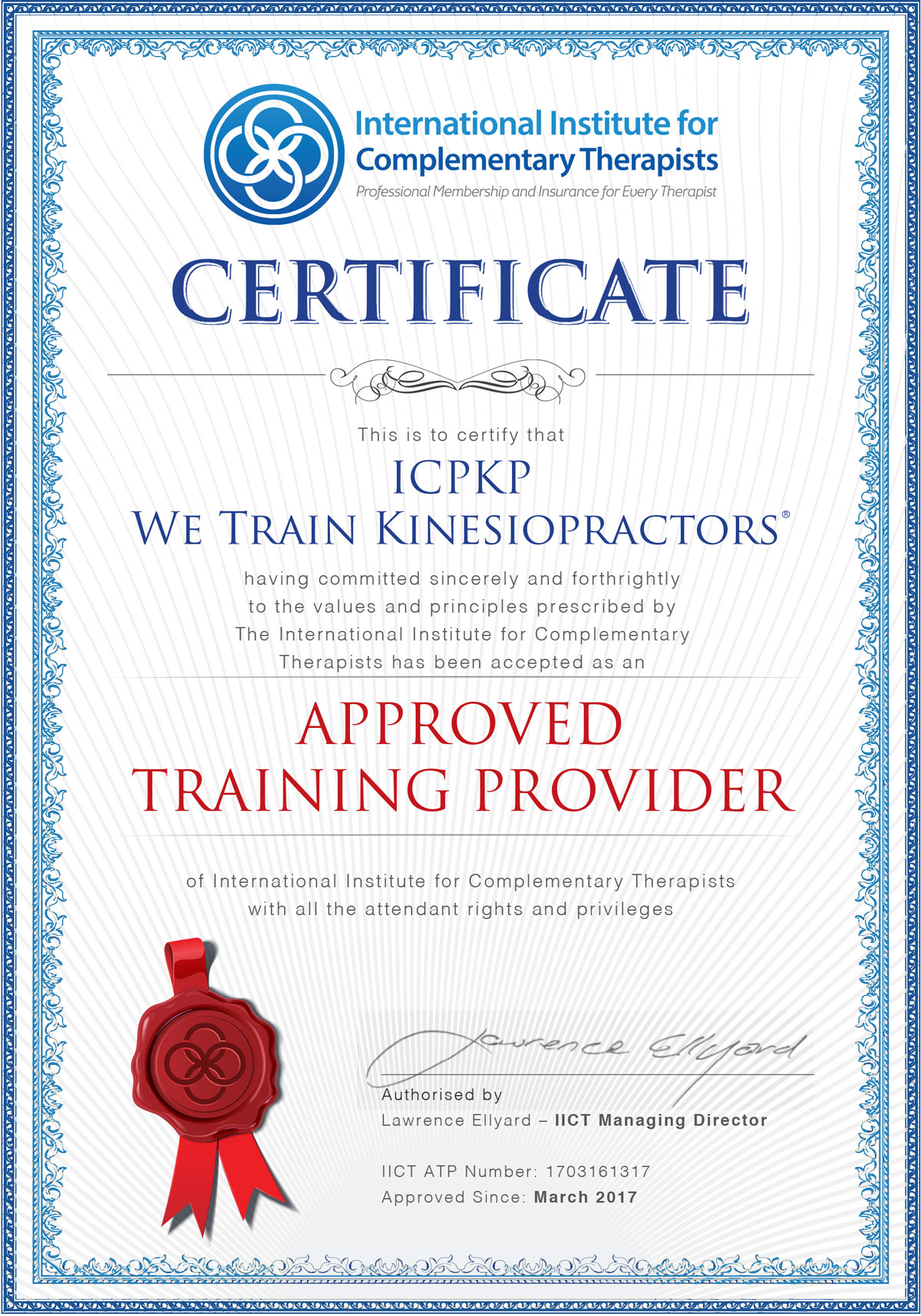Clinical Trials and Peer Reviewed Papers
Professional Kinesiology Practice (PKP™) for chronic low back pain: single blind, randomised controlled pilot study.
A clinical trial of PKP™ for chronic low back pain undertaken through the University of Southampton in the UK and led by Dr Susan Eardley (Fellow, ICPKP®) was published in the July 2013 edition of Forschende Komplementärmedizin.
“Back pain is a common problem which is not easy to treat using conventional methods” says Dr Eardley. “The results of this study indicate that PKP™ may be a very powerful intervention for chronic back pain and we need to perform further work to confirm our findings. If we can repeat our results in a much larger study then the benefits to PKP™ as a profession would be immense”.
Click here to download a PDF copy of the article.
Please note: If you quote the study please ensure you include the following citation exactly as written:
Eardley S, Brien S, Little P, Prescott P, Lewith G: Professional Kinesiology Practice (PKP) for chronic low back pain: single blind, randomised controlled pilot study. Forsch Komplementmed 2013. DOI: 10.1159/000346291.
Summary
Summary of the following article:
Eardley S, Brien S, Little P, Prescott P, Lewith G: Professional Kinesiology Practice (PKP) for chronic low back pain: single blind, randomised controlled pilot study. Forsch Komplementmed 2013. DOI: 10.1159/000346291.
Background: Chronic low back pain is a highly prevalent condition with no definitive treatment. Professional Kinesiology Practice (PKP) is a little known complementary medicine technique using non-standard muscle testing; no previous effectiveness studies have been performed.
Methods: This is an exploratory, pragmatic single-blind, 3-arm randomised sham-controlled pilot study with waiting list control (WLC) in private practice UK (2007-2009). 70 participants scoring ≥4 on the Roland and Morris Disability Questionnaire (RMDQ) were randomised to real or sham PKP receiving 1 treatment weekly for 5 weeks or a WLC. WLC’s were re-randomised to real or sham after 6 weeks. The main outcome was a change in RMDQ from baseline to end of 5 weeks of real or sham PKP.
Results: With an effect size of 0.7 real treatment was significantly different to sham (mean difference RMDQ score = -2.9, p = 0.04, 95% CI -5.8 to -0.1). Compared to WLC, real and sham groups had significant RMDQ improvements (real -9.0, p < 0.01, 95% CI -12.1 to -5.8; effect size 2.1; sham -6.1, p < 0.01, 95% CI -9.1 to -3.1; effect size 1.4). Practitioner empathy (CARE) and patient enablement (PEI) did not predict outcome; holistic health beliefs (CAMBI) did, though. The sham treatment appeared credible; patients did not guess treatment allocation. 3 patients reported minor adverse reactions.
Conclusions: Real treatment was significantly different from sham demonstrating a moderate specific effect of PKP; both were better than WLC indicating a substantial non-specific and contextual treatment effect. A larger definitive study would be appropriate with nested qualitative work to help understand the mechanisms involved in PKP.
© 2013 S. Karger GmbH, Freiburg

